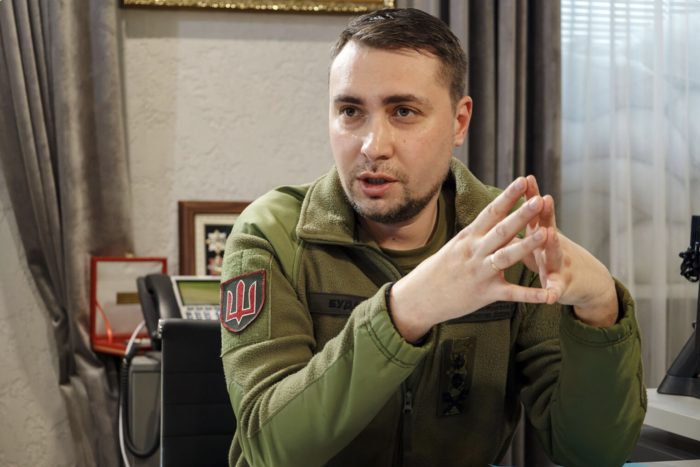In its update on the Russo-Ukrainian war, the Institute for the Study of War (ISW) assessed the progress of the Ukrainian counteroffensive operations on 20 June and the Russian response to the growing pressure of Ukraine's Armed Forces on the southern front.
Ukrainian forces conducted counteroffensive operations in at least two sectors of the front on 20 June, the ISW reported. The Ukrainian Army continued to advance on the administrative border between Zaporizhzhia and Donetsk oblasts and in western Zaporizhzhia oblast, according to the General Staff of Ukraine's Armed Forces.
The Russian Ministry of Defense (MoD) claimed that Eastern Grouping of Forces units repelled four Ukrainian assaults near Orikhiv in Zaporizhzhia Oblast and western Donetsk Oblast. On 19 June, Ukrainian Deputy Defense Minister Hanna Maliar reported that Russia had committed significant forces to stop Ukrainian offensives, making Ukrainian advances difficult on the southern front. The ongoing Ukrainian operations have several tasks that are not solely focused on liberating territory, according to Maliar. Ukrainian forces have yet to start the main phase of counteroffensive operations, Maliar said on 19 June.
Russia's MoD continued to respond to Ukrainian counteroffensive operations with "a relatively high degree of rhetorical coherence," suggesting that the MoD has learned from its past mishandling of the information space during the previous Ukrainian counteroffensive, according to the ISW. On 20 June, Russia's Defense Minister Sergei Shoigu addressed the MoD Collegium and mentioned the ongoing Ukrainian counteroffensive in western Donetsk and Zaporizhzhia Oblasts.
Shoigu claimed that the Ukrainian counteroffensive operations began on 4 June, the ISW reported. Russia's Defense Minister also claimed that Ukrainian forces launched 263 attacks on Russian positions since 4 June but denied that the Ukrainians made any gains, despite publicly available geolocated evidence of Ukrainian advances, according to the ISW.
"The fact that Shoigu addressed the counteroffensive in such a public and relatively even-keeled manner (even while maintaining typical MoD denial of Ukrainian successes) is a notable inflection from the Russian MoD’s failure to prepare a unified response to Ukraine‘s Kharkiv and Kherson Oblast counteroffensives in 2022 and the resulting panic in the Russian information space, indicating the Russian information space has somewhat adapted to and learned from past moments of informational collapse," the ISW reported.
Other takeaways from the ISW's report:
- Russian forces continued a relatively intensified pace of ground attacks near Kreminna in Luhansk Oblast, eastern Ukraine.
- Russian and Ukrainian forces continued ground attacks near Bakhmut.
- Russian forces continued ground attacks along the Avdiivka-Donetsk City line in Donetsk Oblast.
- Ukrainian forces continued counteroffensive operations on the administrative border between Zaporizhzhia and Donetsk oblasts.
- Ukrainian forces continued limited ground attacks in western Zaporizhzhia Oblast.
- The Kremlin continues to lower the requirements for Russian military service to increase recruitment.
- Russia aims to use the annual International Military-Technical Forum “Army-2023” to diversify and expand its defense industrial base.
Ukrainian forces continue to target Russian rear positions in southern Ukraine, including occupied Crimea, the ISW reported. Satellite imagery published on 19 June 19 indicates that the Ukrainian Army conducted a missile strike on Russian positions in Rykove, Kherson Oblast (48 kilometers southwest of Melitopol). Ukrainian Mariupol Mayoral Advisor Petro Andryushchenko stated on 20 June that Ukrainian forces struck Russian positions near occupied Urzuf in Donetsk Oblast (37 kilometers southwest of Mariupol). On 20 June, Crimean occupation head Sergey Aksyonov claimed that Russian electronic warfare units downed a Ukrainian drone in northern Crimea.
On 20 June, Ukraine's Main Military Intelligence Directorate (GUR) Head, Kyrylo Budanov, reported that Russian forces mined additional areas at the Zaporizhzhia Nuclear Power Plant (ZNPP), including the cooling pond of the plant. Russian troops may be mining additional areas at the ZNPP to dissuade potential Ukrainian counteroffensive operations in the area, according to the ISW.
Related:
- Ukraine conducts offensive operations in three sectors, makes gains - ISW
- Frontline report: Ukrainians continue advancing in Zaporizhzhia Oblast; Russian counterattacks on Piatykhatky fail
- Russia prepares for Ukraine's attack on occupied Crimea - UK Intel
- Attrition of Russian artillery among current priorities as Ukraine has "certain advances" in south and near Bakhmut - officials




